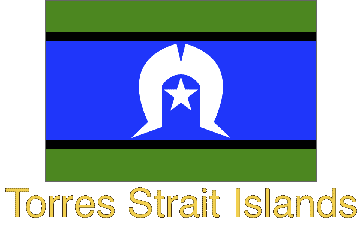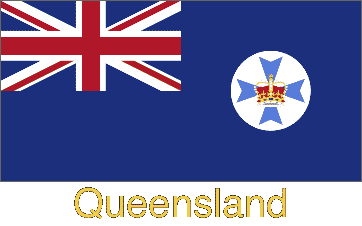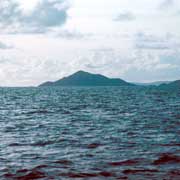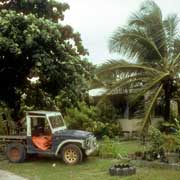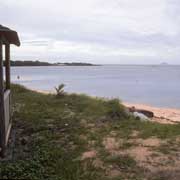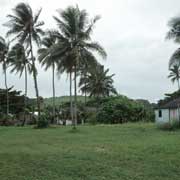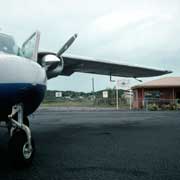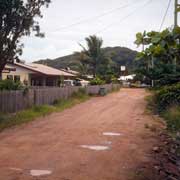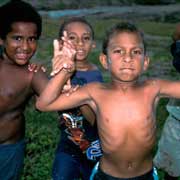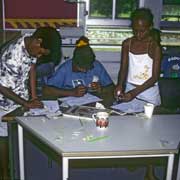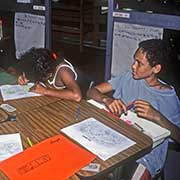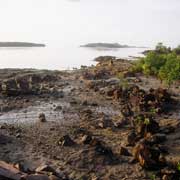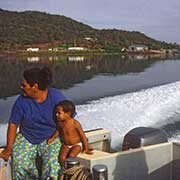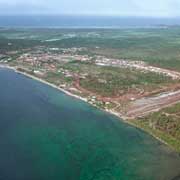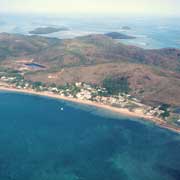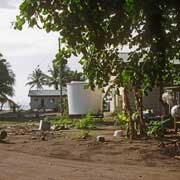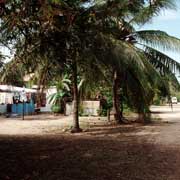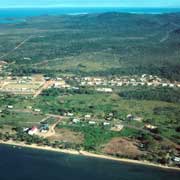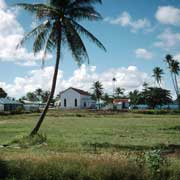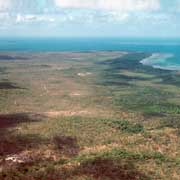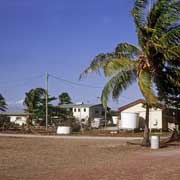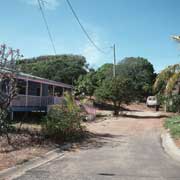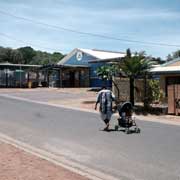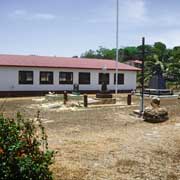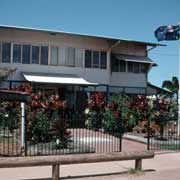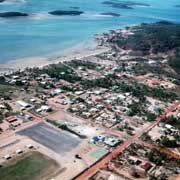Photos of the Near Western Torres Strait Islands, Australia
The Near Western Torres Strait Islands
Moa, Mabuiag and Badu make up the west-central group of the Torres Strait islands.
you may then send it as a postcard if you wish.
Moa Island is the largest of the three and has two settlements, connected by an a 15 kilometre gravel road:
Kubin is a community largely made up of people moved from Muralag (Prince of Wales Island) and other nearby Torres Strait Islands in the early 1870s, along with survivors from Hammond Island who were moved to Poid, on the southwestern corner of Moa Island in 1921. Poid was abandoned after the Second World War; one group moving back to their Narupai (Horn Island) homeland and the remainder moved east to Kubin under the leadership of Wees Nawia. Kubin residents retained their links with the Thursday Island, Bamaga and Cowal Creek (Injinoo) communities and with their help established a number of business enterprises.
St Pauls is the other settlement on Moa. After the forced repatriation of Pacific Islander labourers, following the federal government's introduction of a restrictive immigration policy in 1904, the Queensland government set aside a reserve on Moa's eastern shore for those who managed to remain in Queensland, many of whom had married Torres Strait Islanders and Aboriginal people. In 1908 the Anglican Church began developing St Pauls Mission. They also established the St Pauls Native Training College. A community council was established under the Torres Strait Islander Act 1939, and in 1985, the St Pauls community gained ownership of their land through a Deed of Grant in Trust.
Mabuiag Island: The Mabuiag people had a reputation for hostility to outsiders until their acceptance of Christianity in the early 1870s. In 1877 the mission moved to Bau where the water supply was better. Later, the missionaries persuaded the people to join them at Bau, which became the main settlement. By 1898, Mabuiag people were labouring on pearling luggers for wages, while many followed work to Thursday Island and further to the mainland. An official presence on Mabuiag began during the mid-1920s when Queensland Government posted teachers there. An Island Industries Board store opened in 1946.
Badu Island: A west-central Torres Strait Island which, along with near neighbours on Mabuiag and Moa, once had a feared reputation as an island of headhunters. Warfare, turtle and dugong hunting were the main occupations of Badu men until the 1870s. Pearlers established bases on the island during the 1870s and by the early 1880s the islanders were becoming dependent on wages earned as lugger crew. At the same time, the first missionaries arrived at the people's request. At the peak of the shell industry in the late 1950s, the Badu fleet of 13 boats employed a workforce of 200 providing work for many men, even from other islands as well. However, once the shell trade declined, many people moved to the mainland for work.
